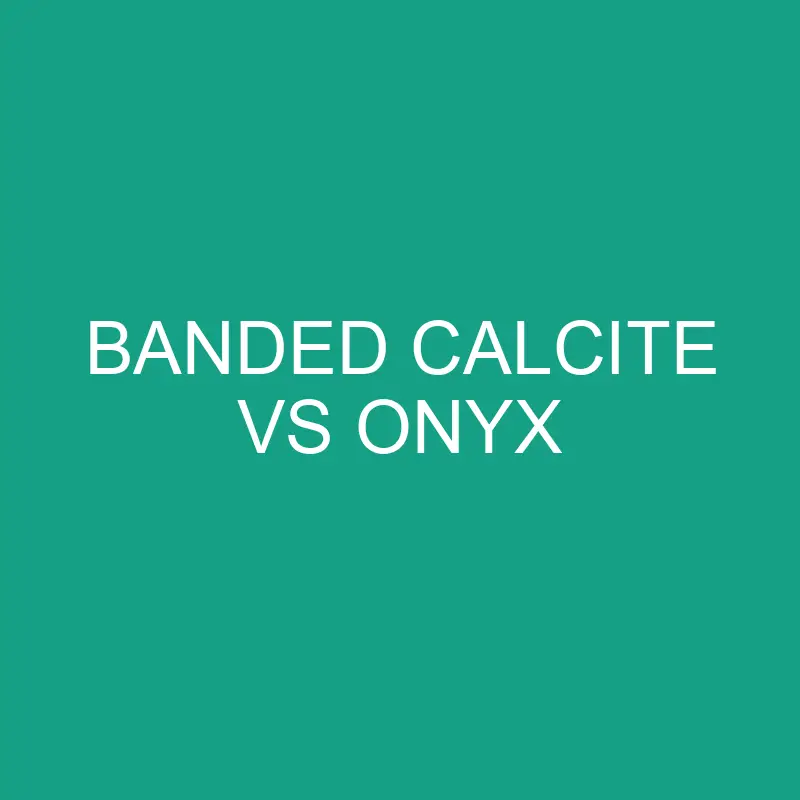Banded calcite and onyx are two distinct minerals that share a common characteristic: banding. However, they differ in their composition, properties, and uses. Let’s explore the characteristics of banded calcite and onyx.
Banded Calcite:
Origins and Geology:
- Origins: Banded calcite is a form of calcium carbonate, and it can be found in various geological settings, including sedimentary rocks, caves, and hydrothermal veins.
Physical Properties:
- Color: Banded calcite often exhibits bands of different colors, including white, brown, yellow, and orange.
- Transparency: Calcite is generally translucent to transparent.
- Luster: It has a vitreous to pearly luster.
- Mohs Scale: Calcite has a Mohs hardness of 3.
Uses:
- Decorative Items: Banded calcite is often used for ornamental items and carvings.
- Mineral Collecting: Mineral collectors appreciate banded calcite for its varied colors and banding patterns.
Metaphysical Properties:
- Amplification: Calcite is associated with amplifying energy and clearing negativity.
- Chakras: Different colors of calcite are believed to resonate with specific chakras.
Onyx:
Origins and Geology:
- Origins: Onyx is a variety of chalcedony, which is a type of microcrystalline quartz. It is formed in the gas cavities of lava.
Physical Properties:
- Color: Onyx is most commonly black, but it can also have bands of white, brown, red, and other colors. Sardonyx, a type of onyx, has bands of brown and white.
- Transparency: Onyx is generally translucent to opaque.
- Luster: It has a waxy to vitreous luster.
- Mohs Scale: Onyx has a Mohs hardness of 6.5 to 7.
Uses:
- Jewelry: Onyx is popular in jewelry, especially for beads, cabochons, and cameos.
- Carvings: It is used for carving small decorative items and cameos.
- Decorative Items: Onyx is also used in ornamental items, such as vases and bowls.
Metaphysical Properties:
- Protection: Onyx is associated with protection and strength.
- Grounding: It is believed to provide grounding and stability.
Comparison: Banded Calcite vs. Onyx
Color and Banding:
- Banded Calcite: Exhibits bands of different colors, including white, brown, yellow, and orange.
- Onyx: Typically black with bands of white, brown, red, or other colors. Sardonyx is a specific type of onyx with brown and white bands.
Transparency:
- Banded Calcite: Translucent to transparent.
- Onyx: Translucent to opaque.
Luster:
- Banded Calcite: Vitreous to pearly.
- Onyx: Waxy to vitreous.
Mohs Scale:
- Banded Calcite: Mohs hardness of 3.
- Onyx: Mohs hardness of 6.5 to 7.
Uses:
- Banded Calcite: Used for ornamental items and appreciated by mineral collectors.
- Onyx: Widely used in jewelry, carvings, and decorative items.
Metaphysical Associations:
- Banded Calcite: Associated with amplifying energy and clearing negativity. Different colors are linked to specific chakras.
- Onyx: Associated with protection, strength, and grounding.
Conclusion:
While both banded calcite and onyx display banding patterns, they are distinct minerals with different compositions and physical properties. Banded calcite is a form of calcium carbonate, often found in sedimentary rocks, and is known for its varied colors. Onyx, on the other hand, is a variety of chalcedony, a type of quartz formed in lava cavities, and is typically black with bands of different colors.
Choosing between banded calcite and onyx depends on your preferences, intended use, and the specific aesthetic you are seeking. Banded calcite’s diverse colors might be appealing for ornamental purposes, while the classic black-and-white contrast of onyx is often favored in jewelry and decorative items. Both minerals contribute to the rich tapestry of gemstones and minerals, offering unique beauty and energy.
